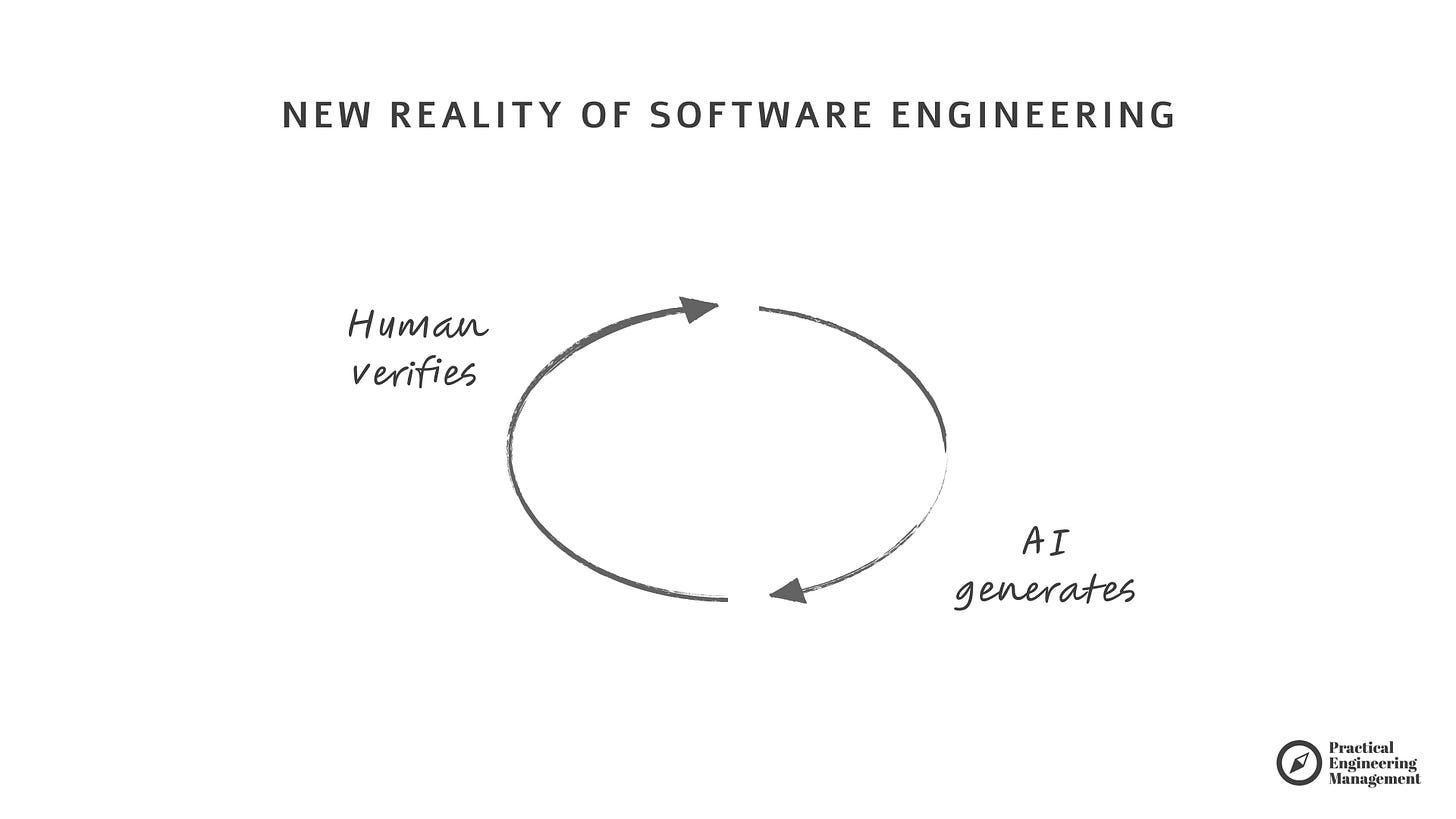From Engineers to AI Operators
The Future Ahead Of Us And How To Prepare For the AI Layer
Let’s be honest: most of us built our careers on typing.
Lines of code, pull requests, late-night merges—that was the craft.
But here’s the uncomfortable truth: the craft is slipping out of your hands.
Not because you’ve suddenly become irrelevant, but because the keyboard is no longer the bottleneck. AI writes code faster than you ever will.
The real work now? Framing problems, not solving syntax.
Your value is in how crisply you can specify intent, define constraints, and leash an army of unpredictable AI agents into doing something useful without burning down production.
Maybe we should stop calling ourselves engineers.
Maybe “Operators” is the better title—because the job isn’t hammering out code instructions anymore, it’s running the AI layer that does.
That might sting if you’ve prided yourself on being the “best coder in the room.” But if leadership is about preparing your teams for what’s next, then it’s time to face it: what’s next isn’t more code. It’s less.
The landscape at a glance
So where exactly are we shifting from—and where are we going?
Here’s the blunt map:
Yesterday
Human-coded logic: craftsmanship = code quality, patterns, reviews.
Inputs: Jira tickets, verbal specs, docs; tests mostly human-authored.
Toolchain: IDE → compiler → CI → prod; linters/static analyzers gate quality.
Work unit: feature branches, PRs; human review is the main safety net.
Risk controls: staging, manual QA, slow rollouts; no model behavior layer.
Org signals: “strong coder,” deep stack expertise, velocity measured by story points delivered.
Sound familiar? Good. Because it’s already yesterday’s playbook.
Now
Yes, it’s literally “now”. There are teams or individuals out there who cracked the AI Agents, and write 10x less code, while moving 10x faster.
Intent > code: executable specs + prompts generate most scaffolding and a chunk of production diffs.
AI layer appears: model gateways, prompt/spec registries, basic eval suites in CI.
Agentic assists: codegen, docs, migrations, PR prep—leashed by tests/evals.
Work unit expands: along with PRs, we version specs, prompts, and eval corpora.
Risk controls: kill-switches, canaries, eval pass gates.
Org signals: operators who can frame → specify → evaluate → operate.
The entire article and PDF/Notion/doc templates are available only for paid subscribers. You can use the training budget (here’s a slide for your HR).
Thanks for supporting Practical Engineering Management!



